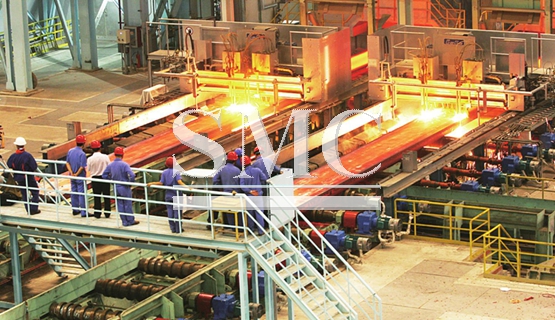
- المنتجات المعدنية منتجات الألومنيوم منتجات النحاس المنتجات المطلية بالمعادن المنتجات الفولاذية المقاومة للصدأ منتجات الفولاذ الكربوني خلط المعادن الخاص
- المشاريع لوحة الحواجز الفولاذية رف الخزانة الهياكل الفولاذية الجسر الفولاذي السقالة المواد الإنشائية المواد الخام الكيميائية One Stop Solutions for Projects
- الحاويات الحاويات القياسية لـ ISO الحاويات للمعدات الحاويات للتخزين والنقل دار الحاويات الحاويات المثلجة الحاويات القريبة السواحل
- الماكينات آلة تشكيل المعادن الآلات الأخرى آلة قطع المعادن آلة تصنيع المعادن آلة التعويج آلة تصنيع البلاط
- منتجات الماكينات صناعة السيارات المنوعات معدات الإرساء معدات السفينة أناء الضغط
- النظام الكهرباء والميكانيكي الكابل الكهربائي الأوتوماتيكي التنسيق الكهربائي نظام طاقة الشمس نظام حماية أمن الكهرباء آلة التحويل خط الأنتاج نظام الإضاءة
- المعدات الطبية منتجات الإطعام منتجات أنبوب إدخال القصبة الهوائية منتجات الرعاية المنتجات البلاسبيكية
- epc مشاريع
- آلات البناء
- خط أنابيب النفط
- خط أنابيب المياه
- انبوب الغاز
- مستلزمات السفن والرباط
- المعادن للزخرفة/ للديكور
- مكونات المحولات
- أنابيب التبادل الحراري
- قطع غيار تكييف الهواء ومستلزماته
- سخان مياه
- أدوات المطبخ و الحمام
- المعادن للأجهزة المنزلية
- أجهزة الطاقة الشمسية
- المصعد الكهربائي
- الأسطح والأسقف
- الكابلات
- الخزانات
- التعبئة والتغليف
- قطع غيار الآلات والمعدات ومستلزماته
- القوالب
- قطع غيار السيارات
- السكك الحديدية و رافعات السكك الحديدية
- تركيب الأجهزة
- الكاشطة
- معدات بناء الطرق
- المكونات الإلكترونية
- اعمال البناء ومواد الديكور
- الأبواب والنوافذ
- الثلاجات
Getting to know more about Carbon Steels.
Steel is considered to be carbon steel when no minimum content is specified or required for chromium, cobalt, columbium [niobium], molybdenum, nickel, titanium, tungsten, vanadium or zirconium, or any other element to be added to obtain a desired alloying effect; when the specified minimum for copper does not exceed 0.40 per cent; or when the maximum content specified for any of the following elements does not exceed the percentages noted: manganese 1.65, silicon 0.60, copper 0.60.
Carbon steel can be classified, according to various deoxidation practices, as rimmed, capped, semi-killed, or killed steel. Deoxidation practice and the steelmaking process will have an effect on the properties of the steel. However, variations in carbon have the greatest effect on mechanical properties, with increasing carbon content leading to increased hardness and strength. As such, carbon steels are generally categorized according to their carbon content. Generally speaking, carbon steels contain up to 2% total alloying elements and can be subdivided into low-carbon steels, medium-carbon steels, high-carbon steels, and ultrahigh-carbon steels; each of these designations is discussed below.

Low-carbon steels contain up to 0.30% C. The largest category of this class of steel is flat-rolled products (sheet or strip), usually in the cold-rolled and annealed condition. The carbon content for these high-formability steels is very low, less than 0.10% C, with up to 0.4% Mn. Typical uses are in automobile body panels, tin plate, and wire products.
For rolled steel structural plates and sections, the carbon content may be increased to approximately 0.30%, with higher manganese content up to 1.5%. These materials may be used for stampings, forgings, seamless tubes, and boiler plate.
Medium-carbon steels are similar to low-carbon steels except that the carbon ranges from 0.30 to 0.60% and the manganese from 0.60 to 1.65%. Increasing the carbon content to approximately 0.5% with an accompanying increase in manganese allows medium carbon steels to be used in the quenched and tempered condition. The uses of medium carbon-manganese steels include shafts, axles, gears, crankshafts, couplings and forgings. Steels in the 0.40 to 0.60% C range are also used for rails, railway wheels and rail axles.
High-carbon steels contain from 0.60 to 1.00% C with manganese contents ranging from 0.30 to 0.90%. High-carbon steels are used for spring materials and high-strength wires.
Ultrahigh-carbon steels are experimental alloys containing 1.25 to 2.0% C. These steels are thermomechanically processed to produce microstructures that consist of ultrafine, equiaxed grains of spherical, discontinuous proeutectoid carbide particles.